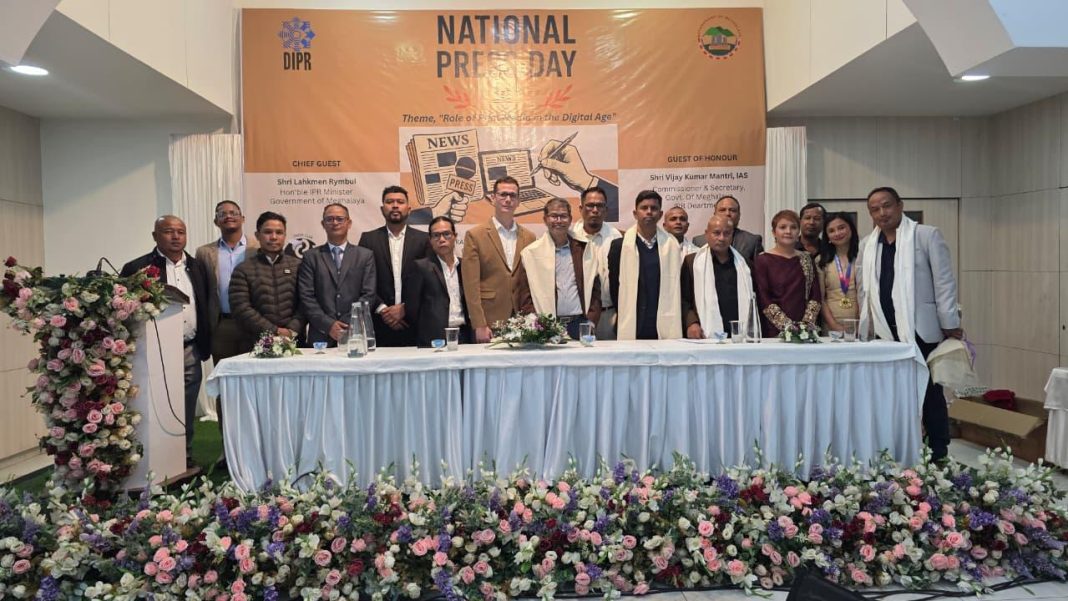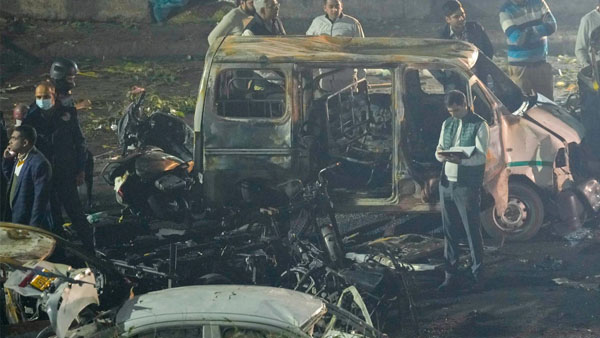By Dipak Kurmi
Bihar has handed over its best-ever mandate to the National Democratic Alliance and delivered the worst-ever verdict to the Opposition’s Mahagathbandhan in the Assembly polls. For the Bharatiya Janata Party, which led the NDA, the victory was doubly sweet because it seemed to emerge as the single largest party in the Assembly for the first time, ahead of its long-time ally, the Janata Dal (United). The outcome tells its own story about the Opposition, particularly focusing on how the Raghopur Assembly seat became emblematic of a larger strategic failure that has left the Mahagathbandhan reeling and searching for answers in the aftermath of a devastating electoral setback.
The tale of Raghopur encapsulates the Opposition’s predicament with remarkable clarity. Tejashwi Yadav, the scion of Rashtriya Janata Dal and patriarch Lalu Prasad, held the seat and faced a nail-biting contest in his family stronghold. Tejashwi was projected as the Opposition’s Chief Ministerial candidate, a position he had occupied since 1967. Raghopur had been won by one or the other socialist party and was wrested by the RJD in 1996. The JD(U) won it in 2010, but in 2015 and 2020, Raghopur voted for Tejashwi. It was considered one of the RJD’s safest seats, making the challenge to retain it all the more significant for the party’s credibility and Tejashwi’s personal political standing.
The India bloc’s tally has taken a bad hit, and predictably, the Mahagathbandhan played the “vote chori” slogan, coined by the Congress to encapsulate their charges of voters’ exclusion in the ongoing revised electoral lists being drawn up by the Election Commission’s Special Intensive Revision. The Opposition accused the Election Commission of not giving a level playing field, claiming systematic bias in the electoral process. On the other hand, the BJP commended the smooth conduct of the elections and claimed there was not a single incident of violence leading to a recount, presenting a starkly different narrative of the electoral exercise.
Whatever the validity of the Opposition’s charge and the BJP’s claim, the Mahagathbandhan has plenty to introspect and reflect upon. While the BJP sorted out the Mahagathbandhan’s housekeeping midway through the polls by naming the incumbent Chief Minister Nitish Kumar as its future Chief Ministerial candidate, the Congress was curiously reluctant to own up Tejashwi as its leader. Congress leader Rahul Gandhi’s “vote adhikar” (voting rights) yatra was intended to draw attention to the Election Commission’s alleged collusion with the Centre to disenfranchise bonafide voters, particularly in the Mahagathbandhan’s strongholds. Tejashwi accompanied Rahul in his journey, but an impression was created and perpetuated that the RJD scion would play second fiddle to the Congress leader, undermining his position as the coalition’s chief ministerial face.
At no point did Rahul mention Tejashwi or the RJD, let alone declaring him the Mahagathbandhan’s Chief Ministerial candidate. This omission proved costly in terms of coalition cohesion and public perception. Krishna Allavaru, former KPMG consultant and co-founder of Shaadis.com, was brought in as Rahul’s principal strategist in Bihar. He was supposedly the mover and shaker behind the yatra and was against the projection of Tejashwi as the coalition’s leader. When it came to ticket distribution, Allavaru demanded a “disproportionate” number of seats in relation to the party’s ground strength and recent electoral performances, creating internal tensions within the alliance.
The Congress unilaterally announced its candidates in seats in the first phase of polling without proper consultation with alliance partners. Omissions and commissions in candidate selection and steering clear of “vote chori” rhetoric revealed deep strategic confusion. Rahul was not seen in Bihar after the first foray, as his sibling Priyanka Gandhi Vadra stepped in briefly to attack the Election Commission again. However, Tejashwi’s campaign lacked the vigour and aggression on display in the 2020 polls. It appeared as though the promises he rolled out were part of the competitive politics he played with the JD(U) and lacked credibility with the electorate.
He promised a government job for every family, Rs 2,500 for every woman, a Rs 30,000 monthly salary to Jeevika Didis who are part of the Bihar Rural Livelihood Promotion Society, a one-time Rs 30,000 payment to women with potential for entrepreneurship, and Rs 5 lakh interest-free loans to the deprived castes. None of these promises seemed to have impacted the electorate significantly, suggesting a disconnect between campaign rhetoric and voter priorities. This was up against the RJD’s already established welfare delivery through the Nitish Kumar government, which had built credibility over nearly two decades.
The state leaders within the Mahagathbandhan protested Allavaru’s decisions regarding strategy and candidate selection because eventually, Ashok Gehlot, the veteran leader from Rajasthan, was dispatched to sort out the mess with Lalu Prasad and Tejashwi. Allavaru was replaced by a more seasoned organisational hand, Avinash Pandey, but by then, the damage had been done to the coalition’s cohesion and public image. Tejashwi was eventually declared the Mahagathbandhan’s Chief Ministerial candidate, but by then, he had already branched out on his own, conducting a campaign that focussed on attacking the incumbent government’s performance rather than presenting a cohesive alternative vision.
Unlike the NDA, which despite the initial glitches eventually hung together as a coalition, the Mahagathbandhan pulled in different directions with devastating consequences. The Vikassheel Insaan Party, helmed by Mukesh Sahani, a leader of the fishing community, was expected to get en bloc votes of the Mallahs, but it drew a blank as these votes went to the NDA instead. The Mallah votes proved crucial in several constituencies where tight margins determined outcomes.
The untested newbie foundling political strategist Prashant Kishor, the Jan Suraj Party founder, was an object of immense interest throughout the campaign. Kishor’s reputation as adviser to the BJP, DMK, AAP and JD(U) preceded his political debut in Bihar. For a while, he inundated social media with his addresses and interviews, speaking the language of development and governance reforms while avoiding mentioning caste and communalism. Kishor has been travelling in Bihar for over a year and had covered more districts than Rahul’s yatra, building grassroots connections and understanding local issues.
However, he seems to have faltered on a few counts that proved electorally significant. First, he announced he would contest from Raghopur against Tejashwi’s seat, directly challenging the RJD’s most prominent face. Then he backed off, maintaining that he had 243 seats to manage and couldn’t afford to pin himself down on one place, a statement that raised questions about his seriousness and commitment. Second, his choice of candidates was questioned as he fielded persons with dubious backgrounds in some constituencies. After stressing good, clean governance, he was accused of fielding persons with questionable credentials. Third, his targets were not clear from the beginning. He began by attacking the Mahagathbandhan and dredged up the “jungle raj” label pinned on the RJD during the Lalu Prasad era. Midway through the campaign, he changed course and focussed on the NDA and Prime Minister Narendra Modi, creating confusion about his actual political positioning.
By the time electioneering ended, the Jan Suraj Party had lost steam and failed to make the expected impact. The Opposition’s showing has put a question mark on its eligibility to claim an Opposition leader’s post in the Assembly, as the party failed to emerge as a credible third alternative. Voters did not even seek a second option in many constituencies, concluding that it was the NDA all the way. The fragmentation of anti-NDA votes across multiple opposition parties and independents further weakened the collective challenge to the ruling alliance.
The Congress dismissed the movement as the staging of “friendly fights” between opposition factions, further diluting the anti-incumbency sentiment. The cumulative effect of these strategic missteps, leadership confusion, and organizational failures created a perfect storm that allowed the NDA to consolidate its position across diverse voter segments. The Mahagathbandhan’s inability to present a united front, articulate a coherent alternative vision, or effectively counter the NDA’s welfare-plus-development narrative left voters with little reason to consider a change in government.
The Bihar election results thus represent not merely the Opposition’s defeat but a comprehensive failure of political strategy, coalition management, and electoral communication. The contrast between the NDA’s disciplined, coordinated campaign and the Mahagathbandhan’s disarray could not have been starker. As the Opposition contemplates its future, the lessons from Bihar’s electoral battlefield demand serious introspection about leadership, messaging, and the fundamental prerequisites for mounting an effective challenge to a well-organized, resource-rich, and strategically superior political machine. Without addressing these systemic weaknesses, the Opposition risks repeating similar failures in future electoral contests, not just in Bihar but across India’s diverse political landscape.
(the writer can be reached at dipakkurmiglpltd@gmail.com)




